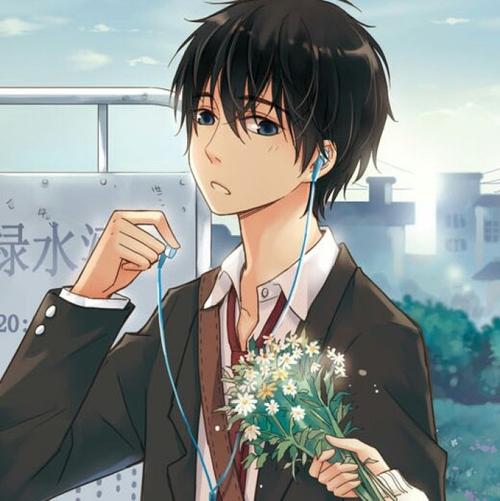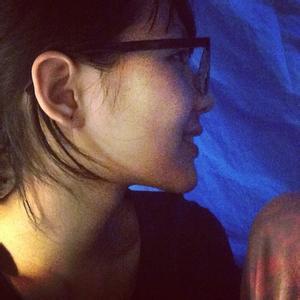- A+
2021考研初试12月26~27日进行,2021考研初试情况(点击查看》》2021考研初试真题及答案解析专题),第一时间为考生提供考研真题答案及答案解析内容,同时新东方考研教师将为考生提供视频直播解析。直播入口|考研真题答案专区
As a historian who’s always searching for the text or the image that makesus re-evaluate the past, I’ve become preoccupied with looking for photographsthat show our Victorian ancestors smiling (what better way to shatter the imageof 19th-century prudery?). I’ve found quite a few, and – since I started postingthem on Twitter – they have been causing quite a stir. People have beensurprised to see evidence that Victorians had fun and could, and did, laugh.They are noting that the Victorians 
suddenly seem to become more human as thehundred-or-so years that separate us fade away through our common experience oflaughter.
Of course, I need to concede that my collection of ‘Smiling Victorians’makes up only a tiny percentage of the vast catalogue of photographicportraiture created between 1840 and 1900, the majority of which show sittersposing miserably and stiffly in front of painted backdrops, or staring absentlyinto the middle distance. How do we explain this trend?
During the 1840s and 1850s, in the early days of photography, exposuretimes were notoriously long: the daguerreotype photographic method (producing animage on a silvered copper plate) could take several minutes to complete,resulting in blurred images as sitters shifted position or adjusted their limbs.The thought of holding a fixed grin as the camera 
performed its magical dutieswas too much to contemplate, and so a non-committal blank stare became thenorm.
But exposure times were much quicker by the 1880s, and the introduction ofthe Box Brownie and other portable cameras meant that, though slow by today’sdigital standards, the exposure was almost instantaneous. Spontaneous smileswere relatively easy to capture by the 1890s, so we must look elsewhere for anexplanation of why Victorians still hesitated to smile.
One explanation might be the loss of dignity displayed through a cheesygrin. “Nature gave us lips to conceal our teeth,” ran one popular Victorianmaxim, alluding to the fact that before the birth of proper dentistry, mouthswere often in a shocking state of hygiene. A flashing set of healthy and clean,regular ‘pearly whites’ was a rare sight in Victorian society, 
the preserve ofthe super-rich (and even then, dental hygiene was not guaranteed).
A toothy grin (especially when there were gaps or blackened gnashers)lacked class: drunks, tramps, prostitutes and buffoonish music hall performersmight gurn and grin with a smile as wide as Lewis Carroll’s gum-exposingCheshire Cat, but it was not a becoming look for properly bred persons. EvenMark Twain, a man who enjoyed a hearty laugh, said that when it came tophotographic portraits there could be “nothing more damning than a silly,foolish smile fixed forever”.
31. According to Paragraph 1, the author’s posts on Twitter____.
A. changed people’s impression of the Victorians.
B. highlighted social media’s role in Victorian studies.
C. re-evaluated the Victorians’ notion of public image.
D. illustrated the development of Victorian photography.
本题正确选项为A。本题为细节题,考查考生原文定位及文章理解能力。根据关键词posts on Twitter定位到原文第一段I startedposting them on Twitter-they have been causing quite a stir.句,意思是“我开始把这些照片发布到Twitter上并引发了很大的轰动。”所以作者的行为引发了大家的争论,与A选项“改变人们对维多利亚时代的印象”表述一致。
32. What does author say about the Victorian portraits he hascollected?
A. They are in popular use among historians.
B. They are rare among photographs of that age.
C. They mirror 19th-century social conventions.
D. They show effects of different exposure times.
本题正确选项为B。本题为细节题,根据关键词定位portraits he has collected到第二段第一句Of course, I needto concede that my collection of ‘Smiling Victorians’ makes up only a tinypercentage of the vast catalogue of photographic portraiture created between1840 and 1900, the majority of which show sitters posing miserably and stifflyin front of painted backdrops, or staring absently into the middle distance.本句前半句意思是“作者的收藏仅占肖像照中的一小部分”,与B选项“他们在那个年代的照片中很罕见”表述一致。
33. What might have kept the Victorians from smiling for pictures in the1890s?
A. Their inherent social sensitiveness.
B. Their tension before the camera.
C. Their distrust of new inventions.
D. Their unhealthy dental condition.
本题正确选项为D。本题为细节题,根据题干关键词1890s定位第四段最后一句Spontaneous smiles were relativelyeasy to capture by the 1890s, so we must look elsewhere for an explanation ofwhy Victorians still hesitated tosmile.但是本句说的是1890s之前很容易看懂微笑的照片,而题干问的是keptVictoriansfromsmiling,也就是“阻止他们微笑”,所以定位第五段Oneexplanation might be the loss of dignity displayed through a cheesy grin.“Nature gave us lips to conceal our teeth,” ran one popular Victorian maxim,alluding to the fact that before the birth of proper dentistry, mouths wereoften in a shocking state of hygiene. 第二句alludingto the factthat后面为答案定位点,意为“在牙医出现之前,口腔的卫生条件非常差。”,与选项D“他们不健康的牙齿状况”表述一致。
34. Mark Twain is quoted to show that the disapproval of smiles in pictureswas___.
A. A deep-root belief.
B. A misguided attitude.
C. A controversial view.
D. A thought-provoking idea.
本题正确选项为A。本题为例证题,根据题干关键词portraits he has collected定位到原文第六段Even Mark Twain, aman who enjoyed a hearty laugh, said that when it came to photographic portraitsthere could be “nothing more damning than a silly, foolish smile fixedforever”.通过句首even可知本句与前一句为递进关系。例证题可直接跳过例子找观点句,所以答案定位在例子前一句A toothy grin(especially when there were gaps or blackened gnashers) lacked class: drunks,tramps, prostitutes and buffoonish music hall performers might gurn and grinwith a smile as wide as Lewis Carroll’s gum-exposing Cheshire Cat, but it wasnot a becoming look for properly bred persons.意为“露齿笑没有阶级划分,但是对于有教养的人来说并不合适”,可知露齿笑是公众普遍的观点,与A选项“一个根深蒂固的信念”表述一致。
35. Which of the following questions does the text answer?
A. Why did most Victorians look stern in photographs?
B. Why did the Victorians start to view photographs?
C. What made photography develop slowly in the Victorian period?
D. How did smiling in photographs become a post-Victorian norm?
本题正确选项为A。本题为主旨题,考查考生对全文大意的把握。通过全文内容可知作者在讨论维多利亚时期的肖像画中的人们为什么表情严肃的问题,与A选项表述一致。




